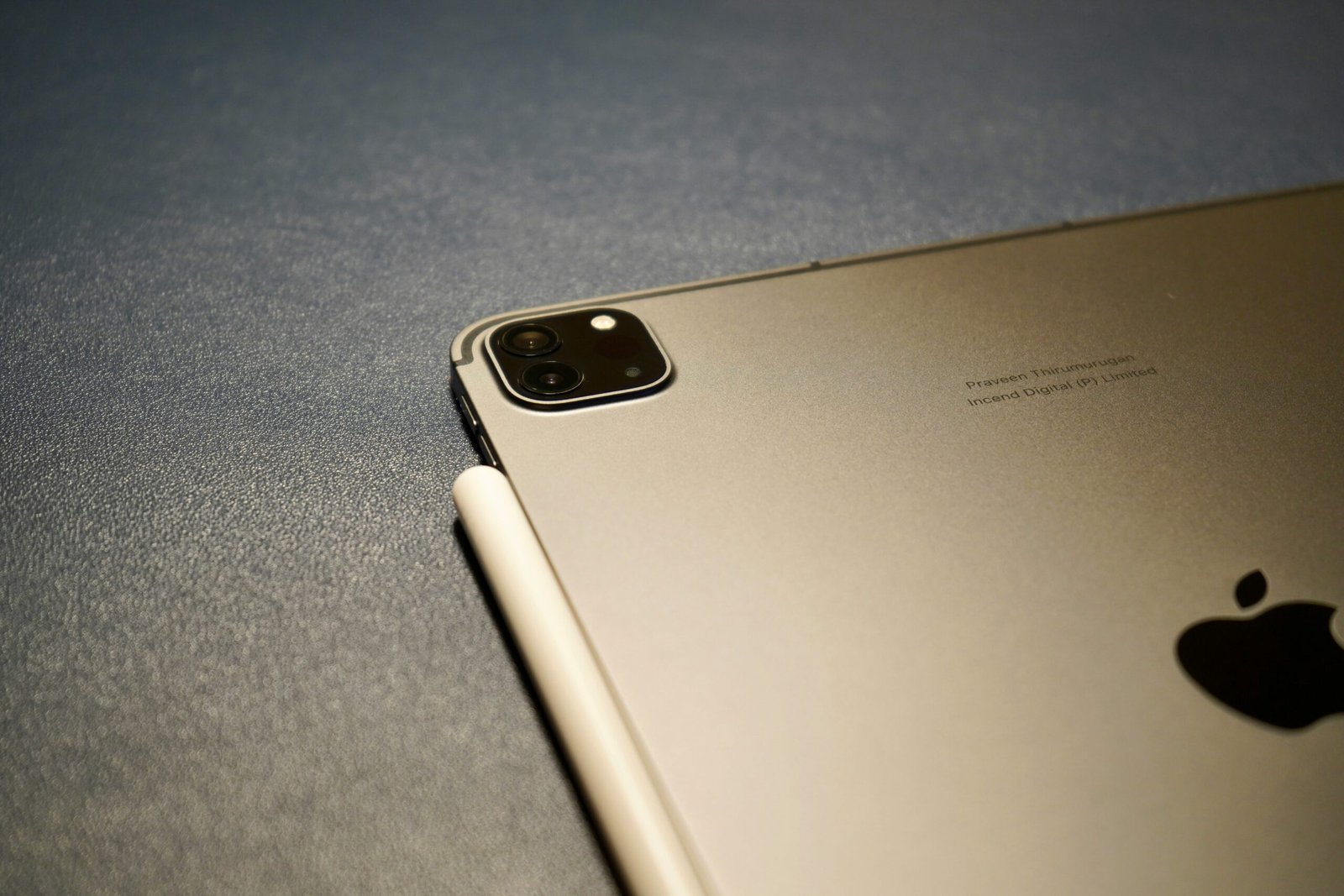Understanding the Temperature Range of an LCD Display
“`html
Introduction to LCD Displays
Liquid Crystal Displays (LCDs) have become a ubiquitous part of modern technology, finding applications in a wide range of devices. From the screens of smartphones and tablets to desktop monitors and large-screen televisions, LCDs are integral to our day-to-day interaction with the digital world. Their ability to provide clear, crisp visuals with relatively low power consumption makes them an ideal solution for both personal and professional use.
LCDs work by manipulating liquid crystals with varying electric currents to modulate light and create images. Due to this unique mechanism, understanding the operating conditions, especially the temperature range, is crucial for ensuring their proper functionality. At different temperatures, the behavior of the liquid crystals can significantly affect the performance and longevity of the display.
The applications of LCDs are not limited to consumer electronics. These displays are widely used in industrial and medical equipment, automotive dashboards, and even outdoor signage. Each of these applications may have different environmental constraints, making knowledge of the temperature range critical. Excessive heat or cold can lead to issues such as slower response times, reduced brightness, and in some cases, permanent damage to the LCD. Therefore, comprehending the temperature parameters helps in optimizing both the performance and durability of the display.
As technology continues to evolve, so too does the sophistication of LCD displays. Manufacturers are constantly striving to enhance their resilience to temperature fluctuations, making it even more pertinent to understand these ranges—whether for designing new technologies or for maintaining existing devices. This foundational knowledge sets the stage for a deeper exploration into the specified temperature ranges for LCDs, ensuring that these versatile displays continue to meet the high standards demanded by users across varied environments.
“““html
Basic Components of an LCD Display
Liquid Crystal Displays (LCDs) rely on a series of intricate components working harmoniously. At the core of an LCD display are liquid crystals, which are substances that exhibit properties of both liquids and solids. These crystals play a pivotal role in the modulation of light, enabling the creation of images and displays. When an electric current is applied to the liquid crystals, they twist or align, thereby controlling the passage of light.
Complementing the liquid crystals are the polarizers. Typically, an LCD exhibit two polarizing filters placed perpendicular to each other. These polarizers only allow light waves vibrating in a particular orientation to pass through. With the liquid crystals situated in between these filters, their alignment will determine whether light can pass through to create visible images.
The backlight is another crucial component of an LCD display. Traditionally, this was done using Cold Cathode Fluorescent Lamps (CCFL), but Light Emitting Diodes (LEDs) have become more prevalent due to their efficiency and longevity. The backlight ensures that the display is visible by illuminating the liquid crystals from behind. The uniformity and intensity of the backlight are essential for achieving consistent brightness and clarity.
Control electronics are the final fundamental component in this ensemble. These electronics manage the electrical signals sent to the liquid crystals, orchestrating their arrangement to form the desired image. The control system typically consists of a microcontroller or a series of integrated circuits that process input data and convert it into precise electrical currents.
The components of an LCD display can be significantly influenced by temperature variations. Liquid crystals become less responsive in extreme cold, and prolonged exposure to high temperatures can lead to permanent damage. Furthermore, temperature fluctuations can affect the performance of the polarizers and the efficiency of the control electronics. Proper thermal management is crucial for maintaining the optimal functionality and longevity of an LCD display.
“““html
How Temperature Affects LCD Performance
Temperature plays a crucial role in determining the overall performance of LCD displays. As the temperature varies, several aspects such as response time, image quality, and the potential for image retention and ghosting are significantly affected.
At higher temperatures, the liquid crystals within the display can become more fluid. This increased fluidity results in a faster response time, which can be beneficial for activities that require quick screen refresh rates, such as gaming or watching videos. However, while the improved response time is advantageous, excessively high temperatures can also lead to a decrease in image quality. The panel may start showing color inaccuracies and a reduction in contrast levels, ultimately diminishing the overall visual experience.
Conversely, lower temperatures can slow down the response time of an LCD. This happens because the liquid crystals move more sluggishly in colder environments. The slower response can lead to motion blur and ghosting, which are particularly noticeable during fast-moving scenes. Furthermore, the chances of experiencing image retention increase as cold temperatures can cause the crystals to become less responsive to changes in the electric field. These effects can be problematic for users who rely on their LCD screens for precise and dynamic visual content.
An illustrative example is seen in outdoor digital signage, which often faces varied temperature extremes. High temperatures during summer can cause the display to lose brightness and clarity, making it challenging for viewers to read the content. In contrast, during winter, the display might exhibit lagging and ghosting effects, impacting the viewer’s ability to interact with real-time information accurately.
Overall, maintaining an optimal temperature range is essential for ensuring the reliable performance of LCD displays. Device manufacturers often include temperature specifications to guide users on the favorable operating conditions. Being aware of these limits helps in preventing performance degradation and prolonging the lifespan of the display.
“`
The Standard Operating Temperature Range
One of the crucial factors that influence the performance and longevity of consumer-grade LCD displays is their operating temperature range. Typically, these displays are designed to function efficiently within a temperature span of 0°C to 50°C (32°F to 122°F). This range is considered normal and acceptable for everyday usage scenarios, ensuring optimal performance whether you’re using your device in a slightly chilly or moderately warm environment.
The lower limit of 0°C (32°F) reflects the threshold below which the liquid crystal material within the display may begin to lose its fluidity, impacting the screen’s response time and overall visibility. Operating an LCD display in such cold conditions may result in slower image refresh rates and potential screen dimming. While these effects are temporary and reversible by bringing the temperature back into the recommended range, it’s advisable to avoid prolonged exposure to such low temperatures.
On the upper end of the spectrum, the 50°C (122°F) mark indicates the maximum temperature at which the display can maintain its structural integrity and performance. Beyond this point, the risk of overheating becomes significant, potentially leading to thermal stress on the electronic components, discoloration, or image persistence issues. Prolonged exposure to high temperatures can also shorten the lifecycle of the display, making it essential to ensure adequate ventilation and cooling in warmer conditions.
For most everyday applications, environments typically fall safely within the 0°C to 50°C range, whether indoors or outdoors. Many modern devices are equipped with sensors and protective mechanisms to alert users if temperatures approach these critical thresholds, thereby preserving the longevity and function of the LCD display. By understanding and respecting this temperature range, users can maximize both the performance and durability of their consumer-grade LCD displays in a variety of scenarios.
“`html
Extended Temperature Range LCDs
LCD displays are integral across various industries, but standard models may not perform adequately in extreme temperature conditions. To address this limitation, extended temperature range LCDs have been engineered to function efficiently in harsh environments. These specialized displays can operate within an expanded temperature spectrum, typically from as low as -30°C (-22°F) to as high as 85°C (185°F). This enhanced durability ensures reliability and performance stability across diverse applications, becoming essential in sectors where environmental fluctuations are significant.
Industrial settings, for instance, frequently deploy extended temperature range LCDs in outdoor machinery, control panels, and process monitoring equipment. These applications often encounter broad temperature variations, making standard LCDs unsuitable. The robust design of extended temperature range displays guarantees continuous performance without compromising visibility or response time, even under severe conditions.
Similarly, the military sector benefits substantially from these advanced displays. Military hardware, such as navigation systems, communication devices, and surveillance tools, must operate seamlessly in diverse climates, from scorching deserts to icy terrains. The extended temperature range LCDs meet these rigorous demands, providing dependable operation critical for mission success and safety.
The automotive industry also leverages these resilient displays. Vehicles, particularly those utilized in extreme weather regions, require dashboard displays, infotainment systems, and navigation screens that can endure substantial temperature swings. Extended temperature range LCDs ensure that drivers and operators receive uninterrupted, clear information regardless of outside weather conditions.
Overall, extended temperature range LCDs represent crucial innovations for industries operating in challenging environments. Their ability to maintain consistent performance across a wide set of temperatures not only enhances operational reliability but also extends the service life of critical display-based systems, underscoring their indispensable role in modern industrial, military, and automotive applications.
“““html
Mitigating Temperature-Related Issues
LCD displays excel in numerous applications due to their versatility and performance. However, varying temperatures can significantly impact their functionality. To ensure optimal performance, various methods and technologies are employed to protect these displays from temperature extremes. This section delves into both hardware and software solutions designed to mitigate temperature-related issues.
One of the primary hardware solutions includes the use of integrated heaters and coolers. Heaters are particularly useful in environments where temperatures dip below the operational limits of the LCD. By maintaining a steady temperature, heaters prevent the liquid crystals from freezing, thus ensuring consistent performance. On the other hand, cooling systems such as fans or heat sinks can dissipate excess heat and maintain the operational integrity of the display in warmer settings. These hardware interventions serve as a first line of defense against temperature-induced degradation.
In addition to hardware solutions, software plays a crucial role in combating temperature extremes. Temperature compensation algorithms are sophisticated software solutions designed to adjust the display settings in real-time based on ambient temperature readings. These algorithms optimize the performance by dynamically tweaking the brightness, contrast, and other display parameters, ensuring the screen remains readable and functional regardless of external conditions. By compensating for temperature variations, such algorithms extend the longevity of LCD displays and enhance user satisfaction.
Practical tips for users further complement these technological interventions. Simple measures such as avoiding direct exposure to sunlight, using protective enclosures, and situating displays in climate-controlled environments can drastically reduce temperature-related issues. Regular maintenance checks to ensure that cooling and heating components are functioning correctly can also aid in preserving the display’s performance. For portable displays, using cases with thermal insulation can be a practical solution for temperature management.
By integrating these hardware and software solutions with practical user strategies, the challenges posed by temperature extremes on LCD displays can be effectively managed, ensuring their reliability and longevity.
“““html
Case Studies
In exploring the practical applications of LCD displays in extreme temperature environments, several case studies highlight the challenges, solutions, and outcomes observed in diverse industries. One prominent example is the use of LCDs in outdoor digital signage, where temperatures can fluctuate significantly throughout the year. An electronics manufacturer had to ensure that their displays functioned reliably in both the scorching heat of summer and the freezing conditions of winter. They employed advanced thermal management systems including heatsinks and temperature sensors to monitor and adjust the operational parameters of the displays. This approach led to improved performance and longer lifespan of the equipment.
Another revealing case study is from the automotive industry, specifically within high-performance vehicles. In this scenario, LCD displays are subjected to rapid temperature changes during the operation of the vehicle. One major car manufacturer collaborated with display technology experts to develop LCD screens that could withstand such thermal variations without compromising display clarity or response time. By incorporating specialized temperature-compensating liquid crystals and robust backlight systems, they were able to maintain optimal display functionality even under extreme conditions.
The aerospace industry also serves as a crucial reference point. LCD displays in this sector encounter not only extreme temperatures but also high-altitude conditions that could affect their performance. A leading aerospace company deployed ruggedized LCD modules designed with wider temperature ranges and reinforced structural integrity to operate effectively in the challenging environment of space travel. These reinforced displays ensured mission-critical information remained accessible and clear, contributing to the success of various missions.
These case studies collectively underline the importance of customized solutions in managing LCD temperature ranges. The insights gained from these real-world applications not only address the technical requirements but also enhance our overall understanding of the adaptive measures necessary for LCD longevity and reliability in extreme conditions.
“`
Future Trends and Innovations
As the demand for reliable and versatile LCD displays continues to expand, significant advancements are on the horizon, focusing on broadening the temperature range within which these devices can operate effectively. Incorporating new materials that can withstand extreme conditions is a key area of innovation. Research into organic liquid crystals, for example, shows promise due to their adaptability in various environmental conditions. Alongside material innovation, novel manufacturing techniques aim to enhance the durability and resilience of LCD displays against temperature fluctuations.
Engineering solutions are also being developed to address the temperature limitations of traditional LCDs. Innovations in thermal management systems, such as advanced heat sinks and more efficient cooling layouts, are crucial for maintaining performance in high-temperature scenarios. Additionally, the integration of nanotechnology has opened new pathways for improving both the display quality and thermal stability of LCDs. Nanomaterials, with their remarkable conductive and insulative properties, could play a pivotal role in future LCD displays’ ability to function across a broader temperature spectrum.
Moreover, collaborative efforts between academia and industry are yielding positive results. Researchers are investigating phase-change materials that could dynamically adjust to temperature variations, thereby protecting the display’s integrity. Concurrently, industry leaders are investing significantly in R&D to create LCDs specifically designed for harsh environments, such as aerospace or automotive applications, where temperature extremes are common.
Experts in the field predict that within the next decade, LCD displays will likely reach unprecedented levels of temperature tolerance, driven by these multifaceted innovations. The convergence of new materials, cutting-edge manufacturing techniques, and advanced engineering practices will not only extend the operational limits of LCD displays but will also set new standards in the display technology industry. This evolution signifies a considerable leap towards more robust, reliable, and versatile LCD solutions, catering to the ever-growing demands of various high-stress environments globally.







